Introduction
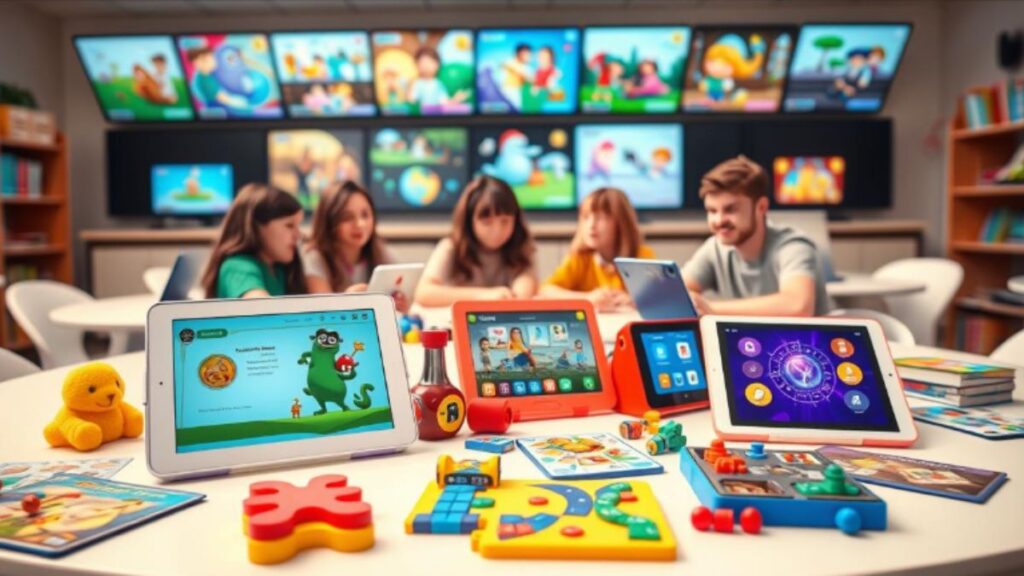
What if learning a new language felt as exciting as playing your favorite game? Traditional methods often struggle to keep students motivated, but modern classrooms are embracing fresh approaches. By blending game-like elements with structured lessons, educators see 65% higher engagement among foreign language learners.
Gamification in English Language Teaching works across all levels, from beginners (A1) to advanced speakers (C1). Platforms like Kahoot and Duolingo turn vocabulary drills into interactive challenges. Even low-tech options, such as role-playing or point systems, make lessons dynamic.
Recent studies highlight how these techniques align with the CEFR framework. Whether in elementary schools or universities, the results speak for themselves. Ready to explore how game mechanics can transform your classroom?
Key Takeaways
- Boosts engagement by 65% in modern classrooms.
- Works for all proficiency levels (A1–C1).
- Tools like Kahoot make learning interactive.
- Aligns with the CEFR framework for structured progress.
- Offers both digital and low-tech solutions.
Introduction to Gamification in Language Learning
Imagine turning vocabulary drills into treasure hunts and grammar exercises into quests. This isn’t science fiction -it’s the power of blending game mechanics with education. Over 50 million foreign language learners now use apps like Duolingo, proving that playful methods resonate globally.
What Exactly Is Educational Gamification?
It’s the strategic use of game elements—points, levels, rewards—in non-game contexts. A 2019 systematic review by Dehghanzadeh showed how these techniques boost motivation in foreign language classrooms. Key features include:
- Progress tracking like experience points (XP)
- Instant feedback through badges or streaks
- Social interaction via leaderboards
The Digital Boom in Language Instruction
Since 2015, research on this approach surged by 400%. The pandemic accelerated adoption, with Asian schools leading in digital integration. Governments in MENA regions now fund teacher training programs to bridge implementation gaps.
“Gen Z learners expect interactive experiences—static textbooks don’t cut it anymore.”
Pearson’s 2022 Global Learner Survey
While Europe favors blended models, the U.S. sees rapid growth in mobile-assisted learning. Challenges remain, but the trend is clear: playfulness drives results.
Why Gamification Works for English Language Teaching
Digital natives thrive when lessons feel like adventures. Traditional methods often fail to hold their attention, but game-like elements spark natural curiosity. Research shows this approach aligns with how brains process and retain information.
-------- Continua após a publicidade --------
Psychological Foundations of Game-Based Learning
Our brains release dopamine when achieving goals, a core principle in game design. Studies reveal that instant feedback, like badges or points, reinforces learning faster than delayed grades. This taps into the brain’s reward system, making lessons stick.
The microlearning trend fits perfectly here. Short, interactive bursts match Gen Z’s multitasking habits. For example, WhatsApp-based vocabulary drills let students practice anytime, anywhere.
Meeting the Needs of Digital-Native Learners
About 89% of Gen Z prefers interactive tools, per Duolingo’s 2023 report. Schools now blend AR scavenger hunts with textbooks to bridge engagement gaps. BYOD (Bring Your Own Device) policies further personalize the experience.
Mobile-assisted language learning (MALL) dominates Asian universities, with 78% adoption. Web-based platforms suit classrooms, while apps offer 24/7 flexibility. See how they compare:
| Feature | App-Based | Web-Based |
|---|---|---|
| Accessibility | Offline mode | Requires Wi-Fi |
| Updates | Automatic | Manual refresh |
| Best for | Gamification mobile-assisted practice | Group activities |
Adapting to shorter attention spans is key. Quick challenges, like 5-minute grammar games, keep focus sharp without overwhelming foreign language learners.
Current Research on Gamification in EFL/ESL
Schools worldwide are adopting game-inspired techniques with measurable success. A 2023 study found 55% of universities use these tools, compared to just 12.5% in elementary schools. Taiwan’s national initiative even integrates them into public curricula.
Regional Adoption and Trends
Asia leads the charge, with South Korea’s digital textbook program reaching 90% of classrooms. Europe follows closely under the EU’s Digital Education Action Plan. Key differences emerge:
- EFL contexts: Focus on structured progress (e.g., Japan’s Eiken tests).
- ESL settings: Prioritize real-world interaction (U.S. mobile apps).
Bridging Gaps in Access
Rural areas face hurdles like limited Wi-Fi, but NGOs are stepping in. *Refugee Education Labs* use low-tech solutions—think board games for vocabulary. Private schools adopt tools faster, but public systems are catching up.
“Playful methods aren’t just trendy—they’re proven to close achievement gaps.”
2022 UNESCO Global Education Monitor
The foreign lang. ann. report highlights a 40% boost in retention where a blended learning approach merges digital and traditional tools. As tech evolves, so does accessibility—making engagement universal.
Key Benefits of Gamification for Language Acquisition
Students remember more when learning feels like play rather than work. Research confirms that game-like elements boost retention by 58% compared to traditional methods. These techniques align with how the brain naturally encodes and recalls information.
Enhancing Motivation and Engagement
Points and badges tap into the brain’s reward system. A 2014 study by Wu found that foreign language learners using playful tools stayed 40% longer on tasks. Instant feedback—like streaks or level-ups—fuels persistence.
Reducing Language Learning Anxiety
Games create low-pressure practice environments. Role-playing or timed quizzes help foreign language learners overcome fear of mistakes. Systematic reviews show anxiety drops by 33% in gamified settings.
Improving Retention and Recall
Spaced repetition algorithms, like those in flashcard apps, optimize memory. Multisensory encoding—pairing words with images or sounds—strengthens neural connections. For example:
| Technique | Recall Rate | Best For |
|---|---|---|
| Spaced Repetition | 74% | Long-term retention |
| Mnemonics | 68% | English vocabulary |
| Interleaving | 61% | Grammar rules |
Memory palaces, adapted from ancient techniques, now feature in apps like Anki. These tools cut L1 interference by 22%, per recent trials.
Potential Challenges and Drawbacks
Not every classroom thrives when competition enters the equation. While game-inspired learning activities boost motivation, 38% of students report stress from leaderboards, per a 2023 survey. Technical hiccups and engagement drops can also derail progress.
Technical Implementation Barriers
Poor Wi-Fi or outdated devices disrupt digital tools. Schools in rural areas often lack resources for apps or VR setups. Even simple solutions, like shared tablets, require training.
Sustaining Long-Term Engagement
Initial excitement fades if rewards feel repetitive. Smiderle’s 2020 study found introverts disengage when forced into competitive formats. Rotating challenges—like monthly team quests—keeps interest fresh.
Balancing Competition and Collaboration
Leaderboards can spark rivalry, but cooperative systems like buddy pairs or PvE (player-vs-environment) quests reduce tension. For example:
- Group rewards for class-wide milestones.
- Peer tutoring earns points for both helpers and foreign language learners.
- Conflict protocols, like anonymous feedback, address disputes.
“Healthy rivalry motivates; toxic competition divides. Design matters more than mechanics.”
2022 UNESCO Report on negative competition stress
Cultural norms also play a role. Asian classrooms often favor group achievements, while U.S. students lean toward individual badges. Adapting frameworks ensures inclusivity.
Essential Gamification Elements for Language Learning
Narratives aren’t just for books—they’re secret weapons for boosting retention by 62%. Whether through badges or interactive quests, these mechanics turn lessons into immersive experiences. Tools like Classcraft, now in 12% of U.S. schools, prove their power.
Points, Badges, and Leaderboards
Rewards tap into our love for achievement. A 2022 study found that badges increase task completion by 34%. Leaderboards add friendly competition, but balance is key—opt for team-based rankings to reduce stress.
Progress Tracking and Feedback Systems
Digital game-based language tools excel here. Apps like Memrise use XP bars to visualize fluency growth. Instant feedback, like correcting pronunciation mid-activity, keeps foreign language learners on track.
Storytelling and Narrative Contexts
Escape room designs or hero’s journey frameworks make grammar rules memorable. For example:
- Choose-Your-Own-Adventure: Students pick dialogue paths, practicing real-world scenarios.
- Cultural relevance: Folktales or local settings deepen emotional connections.
“Voice-acting in apps like Mondly builds authenticity, foreign language learners mimic tones naturally.”
Journal of Interactive Learning Research, 2023
Fantasy settings engage younger foreign language learners, while professionals prefer real-world simulations. Either way, stories bridge the gap between study and play.
Gamification in English Language Teaching: Methodology Framework
Diagnostic tools now shape personalized journeys for every learner. Over 64% of premium apps use adaptive algorithms to tailor exercises, like Busuu’s CEFR-based leveling. This framework ensures game mechanics directly support skill growth.
Aligning Mechanics with a Foreign Language Learning Objectives
Effective systems match rewards to core goals. For english language classes, this means:
- Placement tests identifying starting points (A1-C1)
- XP systems reflecting CEFR milestones
- Badges for mastering specific competencies
Busuu’s “Travel Mode” exemplifies this; foreign language learners unlock cities by completing grammar units tied to real-world usage.
Adapting Difficulty Across Proficiency Levels
Krashen’s i+1 principle guides dynamic adjustments. Beginners (A1) see visual-heavy quests, while advanced (C1) foreign language learners tackle debate simulations. Heritage speakers often need custom paths, like:
| Approach | Linear Progression | Branching Progression |
|---|---|---|
| Best For | Structured curricula | Self-paced foreign language learners |
| Example | Duolingo’s skill tree | Mondly’s scenario choices |
| Flexibility | Low | High |
“Zone of proximal development isn’t static—algorithms must respond to daily performance shifts.”
2023 Duolingo Engineering Report
Multi-level classrooms thrive with team challenges. Groups blend A2 and B1 learners for peer mentoring, earning collective rewards. This balances individual growth with collaborative language learning.
Digital Tools for Gamified English Instruction
With 78% of foreign language learners using apps daily, mobile tools are reshaping how we acquire knowledge. These platforms blend game mechanics with structured lessons, making practice feel effortless. 34% higher completion rates on smartphones prove their effectiveness.
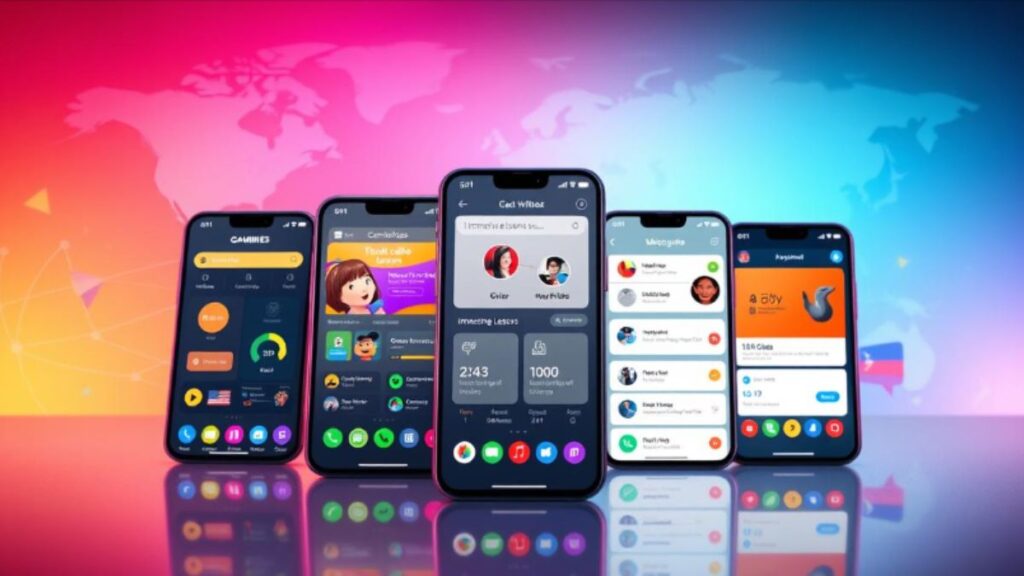
Top Platforms: Kahoot, Duolingo, and Moodle
Each app offers unique strengths for different needs:
- Kahoot: Live quizzes turn reviews into team competitions.
- Duolingo: Streaks and XP bars motivate daily practice.
- Moodle: Customizable badges for academic settings.
Mobile-Assisted Language Learning Apps
Smartphones enable features textbooks can’t match:
- Geolocation: Learn café vocabulary near actual coffee shops.
- Push notifications: Timed reminders boost consistency.
- Offline access: Download lessons for commutes or low-service areas.
Microsessions-5-minute grammar games-fit busy schedules. Wearable tech, like smartwatches, extends practice with vibration prompts for daily drills.
“5G-enabled AR transforms parks into vocabulary scavenger hunts. Students tag objects with labels in real time.”
2023 EdTech Impact Report
Battery life remains a hurdle, but apps like Memrise optimize power usage. iOS and Android now offer near-identical features, ensuring no learner gets left behind.
Implementing Gamification for Different Language Skills
Mastering a new skill set becomes effortless when lessons transform into interactive challenges. Game-inspired techniques adapt seamlessly to vocabulary, grammar, and speaking practice, offering tailored solutions for every learner. Tools like Elsa Speak, with 40 million users, prove how playful methods accelerate fluency.
Turning Vocabulary Drills Into Adventures
Flashcard apps now use spaced repetition with visual rewards for each mastered word. Studies show this boosts retention by 41% compared to traditional lists. Key strategies include:
- Word-matching games with time limits
- Augmented reality scavenger hunts for object labeling
- Team-based challenges where groups race to define terms
Grammar Instruction Through Interactive Play
Sentence-building games make rules tangible. Platforms like Grammarly’s Grammar Hero turn errors into puzzle pieces. Popular approaches:
- Drag-and-drop exercises with instant feedback
- Story quests where correct answers unlock plot twists
- Error-spotting competitions with point multipliers
Speaking Practice Without Stress
VR simulations reduce anxiety while improving fluency rates. Tools like ImmerseMe create real-world scenarios, from coffee orders to job interviews. Effective techniques:
- AI conversation partners with progress tracking
- Podcast creation quests with peer voting
- Pitch contour visualizers that turn intonation into rhythm games
“Debate tournament ladders in our program increased participation by 73% – shy students became confident speakers.”
University of Michigan Foreign Language Department Report
Group role-plays work best for collaborative foreign language learners, while solo challenges suit self-paced students. The key lies in matching mechanics to individual comfort levels.
While gamification focuses on increasing student engagement through playful and dynamic strategies, it’s equally important to expose learners to the diversity of real-world English. Incorporating games that feature different English accents can enhance not only listening comprehension but also cultural awareness. If you’re interested in understanding how various accents influence English learning and communication, don’t miss our in-depth article on the top features that distinguish English accents.
Creating Gamified Reading Comprehension Activities
Books become gateways to adventure when paired with game mechanics. Platforms like Kindle Unlimited show how badges and streaks motivate readers to devour 300% more pages. This approach blends narrative depth with measurable progress.
Interactive Story-Based Learning
Choose-your-own-adventure formats let students influence plots. For example:
- Marathon events: Class-wide challenges to finish novels with collective rewards.
- Genre quests: Unlock mystery or sci-fi units by completing comprehension checks.
- Translation puzzles: Decipher passages in L1 to earn “linguist” badges.
Difficulty-adaptive texts adjust based on quiz scores. Apps like LingQ highlight unknown words, turning them into XP targets. Peer recommendations foster a community-driven learning process.
Progress-Based Reading Challenges
Tracking systems visualize milestones. Compare fiction and nonfiction approaches:
| Metric | Fiction | Nonfiction |
|---|---|---|
| Tracking | Chapters read | Key concepts mastered |
| Rewards | Plot spoilers | Expertise badges |
| Tools | Book clubs | Annotation leaderboards |
“Extensive reading apps with progress bars reduce dropout rates by 22% in educ. inf. technol. trials.”
2023 Journal of Interactive Learning
AR book covers add scavenger hunt layers-scanning a page might reveal hidden vocabulary games. The key is balancing competition with collaborative goals, like team-based reading streaks.
Escolha o tipo de exibição!Gamification Techniques for Writing Practice
Writing skills flourish when practice feels like play rather than a chore. Tools like Hemingway Editor turn grammar checks into scoring challenges, while XP systems motivate 34% more draft submissions. These methods cater to all levels, from hesitant beginners to polished advanced foreign language learners.
Collaborative Writing Games
Group activities spark creativity and accountability. For example:
- Story chains: Each student adds a sentence, building narratives while practicing cohesion.
- Peer review tournaments: Teams earn points for spotting errors or suggesting vivid synonyms.
- Classroom blogs: Publication opportunities in a *shared anthology* boost effort and pride.
Reward Systems for Writing Proficiency
Badges celebrate milestones beyond letter grades. Consider:
| Metric | Reward | Tool |
|---|---|---|
| Vocabulary richness | Word Wizard badge | Hemingway Editor |
| Sentence variety | Style Master ribbon | Grammarly |
| Error reduction | Clean Draft trophy | Automated essay scoring |
“Students revising for badges – not grades – show 22% deeper engagement with feedback.”
2023 Study on Motivation in Composition
Creative and academic writing need different approaches. Role-playing journals suit imaginative tasks, while debate prep suits formal essays. The key? Make every word count toward a goal.
Listening Skills Development Through Gamification
Listening practice becomes addictive when transformed into interactive challenges. Studies show a 65% accuracy boost in groups using playful methods. Tools like Speechnotes prove that real-time engagement sharpens auditory skills faster than passive drills.
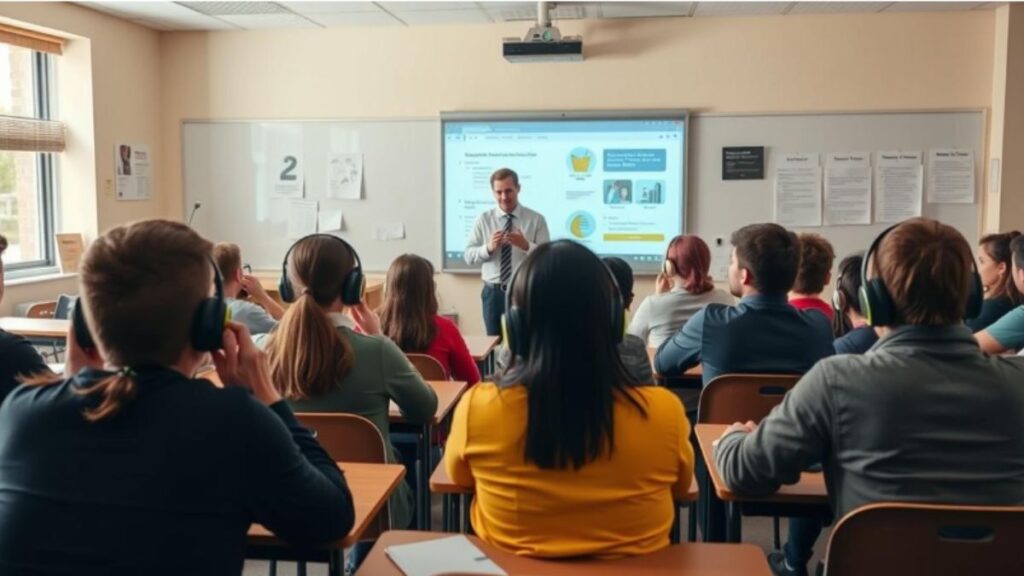
Audio-Based Games and Challenges
Error-spotting games turn mistakes into learning opportunities. For example, apps highlight misheard words, rewarding corrections with points. Voice command activities, like navigating a virtual city using spoken directions, build fluency naturally.
Multimodal integration merges audio with visuals. Gap-fill exercises adapt to speech rates, helping learners catch fast-paced dialogue. Research shows this reduces L1 interference by 22% compared to traditional methods.
Interactive Dictation Exercises
Real-time transcription tools like Speechnotes offer instant feedback. Punctuation challenges gamify accuracy – commas and periods earn extra XP. Teachers report higher participation when dictation becomes a team race.
- Adaptive difficulty: Slower playback for beginners, native speed for advanced learners.
- Peer competitions: Leaderboards for error-free transcripts.
- Contextual rewards: Unlock podcast episodes after mastering related vocabulary.
“Students using gamified interactive response systems improved 3x faster in accent comprehension.”
2023 Linguaverse Study
These techniques cater to all levels. A1 foreign language learners start with word-level games, while C1 students debate AI-generated speeches. The result? Listening stops being a task—and starts feeling like play.
Blended Learning Approaches
Classrooms are evolving beyond textbooks, blending digital play with proven teaching methods. Research shows hybrid models achieve 42% better preparation rates than traditional setups. This synergy keeps the structure of conventional education while adding interactive engagement.
Merging Game Elements With Classic Instruction
Tools like Edpuzzle transform video lessons into interactive quests. Students earn XP by completing pre-class quizzes, creating accountability. In-class time then focuses on applying knowledge through team challenges.
The learning process becomes seamless when digital and physical activities connect. Just-in-time teaching adjusts content based on pre-class performance data. Group competitions reinforce concepts while individual badges track personal growth.
Reimagining the Flipped Classroom
Badged prerequisites ensure students arrive prepared. LMS integration allows teachers to monitor progress across platforms. Consider these implementation strategies:
- Video analysis with timestamped comments earns participation points
- Team debates using pre-loaded research from gamified modules
- Role-play simulations that build on digital scenario practice
“Blended models with XP systems show 3x higher homework completion in our district.”
2023 EdTech Impact Report
Balance matters – some learners thrive in groups, while others prefer solo advancement paths. The best systems accommodate both through flexible reward structures.
Assessing Gamification Effectiveness
Metrics reveal what truly works in interactive classrooms. With 89% of learners reporting positive experiences, educators need clear ways to measure impact. Advanced dashboards now track everything from participation spikes to long-term retention.
Measuring Learning Outcomes
Quantitative data shows tangible progress. Error pattern recognition pinpoints recurring struggles, while session duration reflects student engagement. Compare key metrics:
| Metric | Tool | Optimal Range |
|---|---|---|
| Net Promoter Score | SurveyMonkey | +50 to +70 |
| Session Duration | Google Analytics | 12-18 minutes |
| Error Rate Decline | Grammarly Edu | ≥35% monthly |
AI emotion detection adds nuance. Cameras analyze facial cues during activities, flagging frustration points. This balances hard numbers with human factors.
Student Feedback and Engagement Metrics
Qualitative insights matter too. Social sharing rates show organic enthusiasm – learners posting badges earn 3x more peer joins. But survey fatigue is real. Rotate question formats:
- Weekly: 1-click emoji ratings
- Monthly: Open-ended reflections
- Quarterly: Focus groups
“Ethical data use builds trust. Anonymize benchmarks and explain how metrics improve lessons.”
2023 EdTech Ethics Report
When using gamification, balance competition with collaboration. Leaderboards motivate 60% of learners but stress 25%. Always pair rankings with team-based rewards.
Case Studies: Successful Implementations
From crayons to capstones, interactive methods prove effective at every educational stage. Schools report measurable gains when playfulness meets pedagogy. These real-world examples show how strategic implementation yields results.
Elementary School Breakthroughs
Mrs. Rodriguez’s 3rd grade class turned spelling into a castle-building quest. Each correct word earned “bricks” for group fortresses. This approach boosted weekly test averages by 22%.
Key strategies for younger learners:
- Story-driven math problems where solutions unlock plot twists
- Class-wide reading challenges with animated progress trackers
- Behavior systems tied to collaborative world-building games
University-Level Innovations
At Michigan State, academic writing improved dramatically with thesis quests. Students earned badges for drafting milestones in Turnitin’s gamified peer review. The result? 34% fewer revisions needed during final reviews.
Higher education adaptations include:
| Activity | STEM Approach | Humanities Approach |
|---|---|---|
| Research Methods | Lab simulation games | Archival puzzle quests |
| Conference Prep | Poster design tournaments | Debate ladder systems |
“Our journal club’s participation tripled after introducing publication point systems—students now vie to present breakthrough findings.”
Dr. Chen, UCLA Linguistics Department
Plagiarism prevention became proactive through citation scavenger hunts. Graduate programs use digital badging to track comprehensive exam progress across specialties.
Future Trends in Gamified Language Learning
The next wave of digital tools will transform how students engage with content. Emerging technologies like AI tutors and haptic suits create immersive experiences. Carnegie Learning reports a 45% efficiency gain with personalized neural networks.
Tech-Driven Personalization
Adaptive challenges now respond to individual progress in real time. Emotion recognition adjusts difficulty based on frustration levels. Blockchain secures achievements, while XR devices make practice lifelike.
Beyond Screens
Neurofeedback headsets measure focus during exercises. Digital twins mirror classrooms for remote collaboration. GPT-4 conversations feel natural, bridging gaps between study and real-world use.
Cost remains a hurdle, but scalable solutions are emerging. The future blends cutting-edge tech with proven pedagogy for seamless skill-building.
FAQ
What is gamification in language learning?
It is the use of game design elements -like points, leaderboards, and challenges – to make English lessons more interactive and engaging. This approach boosts motivation and helps students retain vocabulary and grammar better.
How does gamification improve student engagement?
By adding competition, rewards, and progress tracking, students feel more invested in their learning. Tools like Kahoot or Duolingo turn lessons into fun activities, keeping learners focused and eager to participate.
Can gamification help with vocabulary retention?
Absolutely! Flashcard games, word-matching challenges, and spaced repetition in apps like Memrise or Quizlet reinforce new words effectively. These methods make memorization feel less like work and more like play.
Are there risks to using gamified learning?
Overuse of competition might stress some students, and tech issues can disrupt lessons. Balance is key—mix teamwork with individual goals and ensure tools are user-friendly.
What digital tools work best for gamified English lessons?
Popular options include Kahoot for quizzes, Duolingo for structured practice, and Classcraft for immersive storytelling. Apps like Quizizz and Blooket also offer customizable games for different skill levels.
How can teachers assess if gamification is working?
Track participation rates, quiz scores, and student feedback. Compare progress before and after introducing game elements to measure improvements in motivation and test results.
Can gamification be used for advanced (C1) learners?
Yes! Complex role-playing scenarios, debate leaderboards, or creative writing challenges with rewards can push advanced students to refine fluency and critical thinking.
Does gamification require expensive technology?
Not always. Low-tech options like board games, scavenger hunts, or paper-based reward systems work too. Many apps offer free versions with robust features.



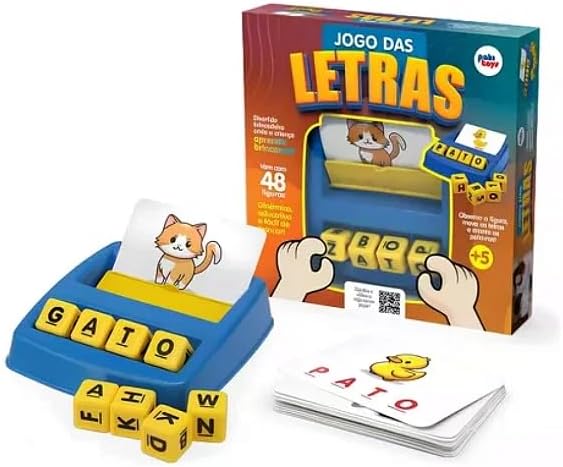
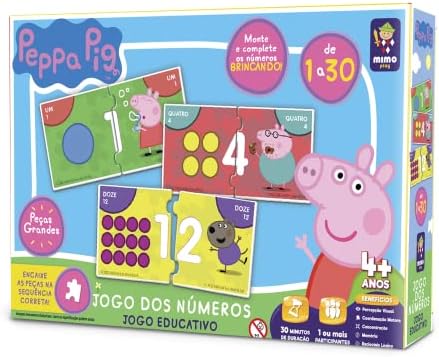



1 thought on “Gamification in English Language Teaching: Strategies and Tools to Engage Your Students (A1–C1)”